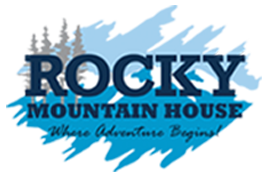Did you know the Town of Rocky Mountain House has a Tree Bylaw? The purpose of Bylaw 2012/04V is to protect and maintain public trees and outline property-owner responsibilities for private trees and shrubbery.
Overhead clearance and sightlines
Trees or shrubs growing on private property and next to Town boulevards, sidewalks, curbs or lanes must be properly trimmed.
- Branches projecting over a sidewalk must be at least 8 feet high.
- Branches projecting over a roadway or lane must be at least 14 feet high.
These height restrictions allow for safe and adequate passage of large vehicles. It is also your responsibility to prune any trees or shrubs on your property interfering with the line of sight of any street signs.
Tree Bylaw Information Bulletin [PDF]


Tree Bylaw Information Bulletin [PDF]
Black Knot and other diseases
The Town of Rocky Mountain House takes measures to control Black Knot on Town-owned trees, as it spreads rapidly to surrounding trees of the Prunus family. We ask for your assistance in keeping the disease in check on your property too.
What is Black knot?
Black knot is caused by a pathogen known as Apiosporina morbosa. The airborne fungus is very contagious. Spores are spread to other trees and shrubs by wind and birds. It infects trees within the Prunus family, and is also known to infect shrubs in the Rose family. If left untreated it effectively strangles new growth, which will girdle the branches and doom the tree to deterioration.
How to Identify Black Knot
While it is important to regularly monitor your trees for black knot symptoms, it is easiest to identify between late fall and early spring when dormant and branches are bare: 
Early detection and sterile pruning is the most effective way of dealing with Black Knot.
Pruning infected trees in winter months is best: The lesions are more noticeable from the lack of foliage and the disease is dormant so there is less risk of spread.
- Educate yourself and your neighbours about Black Knot and how to properly manage it on your property.
- Prune knots by cutting back at least 15-20 cm(6-8 inches) below the swelling. It is preferable to prune an infected branch further back to a healthy collar rather than leave a stub.
- After pruning, be sure to disinfect pruning tools with a mixture of bleach (10%) and water, isopropyl alcohol, rubbing alcohol or Pine-Sol.
- Burn diseased material immediately or put infected branches in a sealed garbage bag and put it in your black waste bin for regular collection. Even after the knots have been removed from the tree, they can produce infected spores for up to 4 months.
- Do not mix infected cuttings with other organic materials, including those in your green cart
Black Knot Information Bulletin [PDF]

Black Knot Information Bulletin [PDF]
STOP DED Dutch Elm Disease
There is a provincial elm pruning ban between April 1 and Sept. 30 each year.
Elm trees are best pruned in late fall or early spring to prevent the spread of Dutch Elm Disease.
Visit www.stopded.org to learn more about identifying, treating and preventing Dutch Elm Disease.

